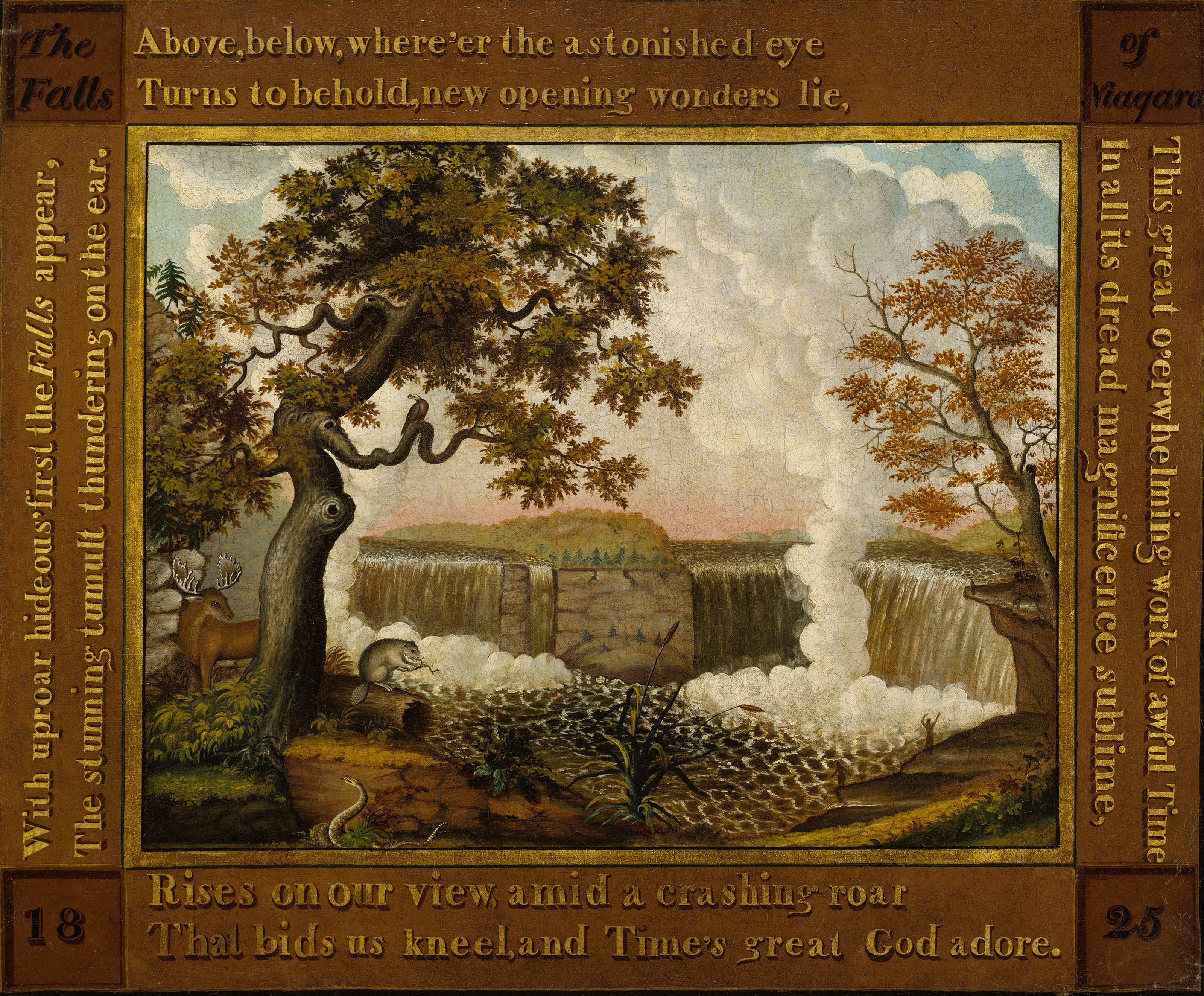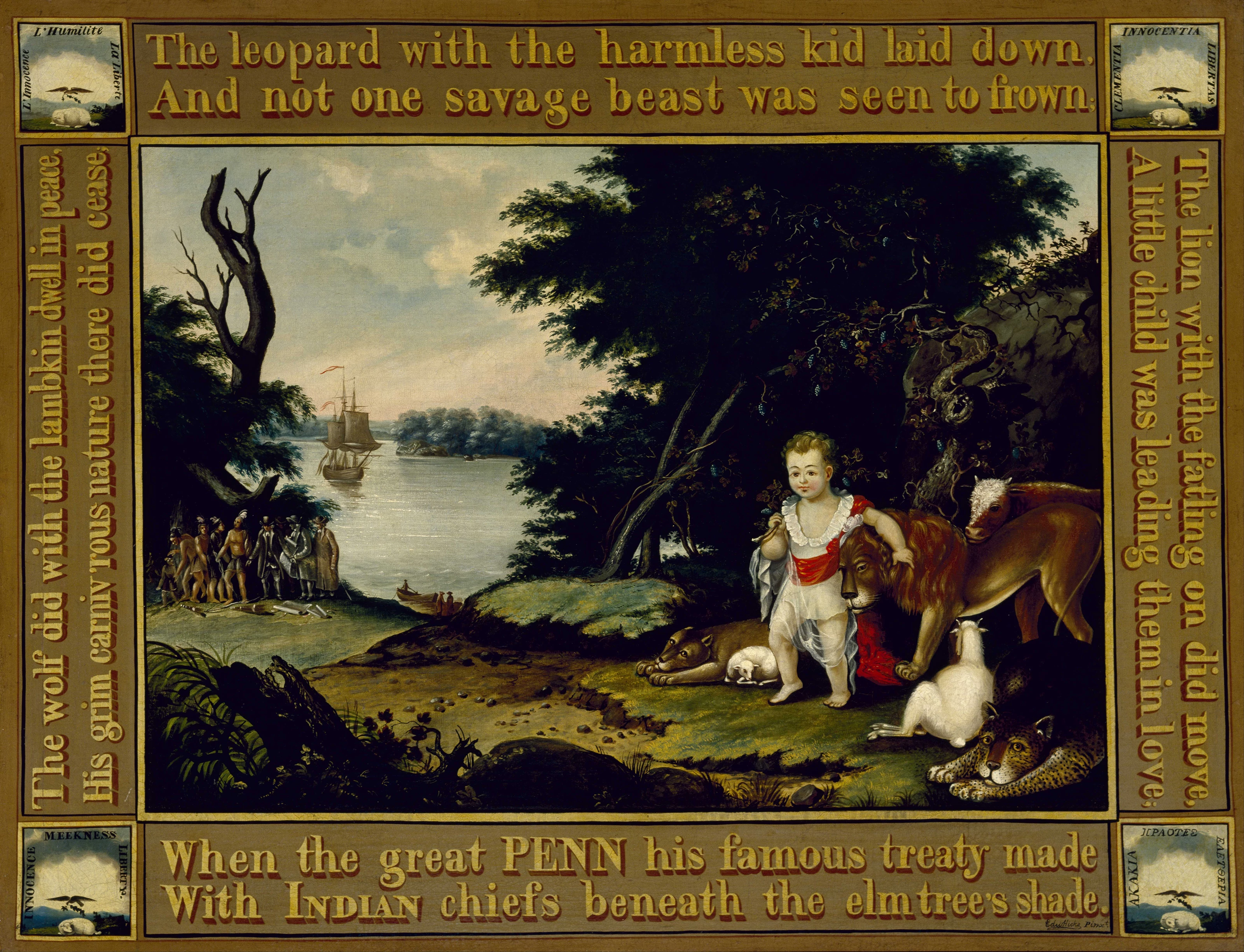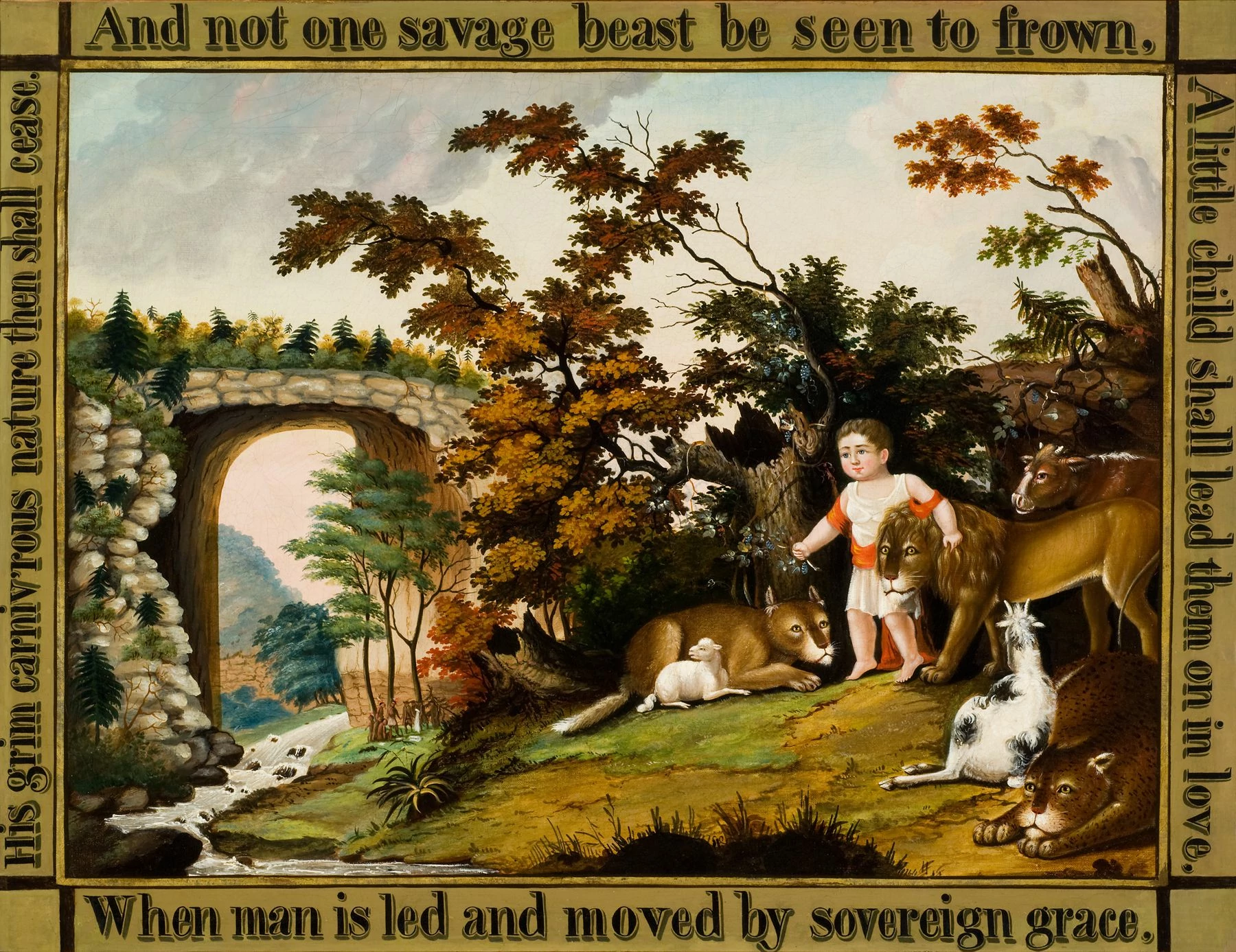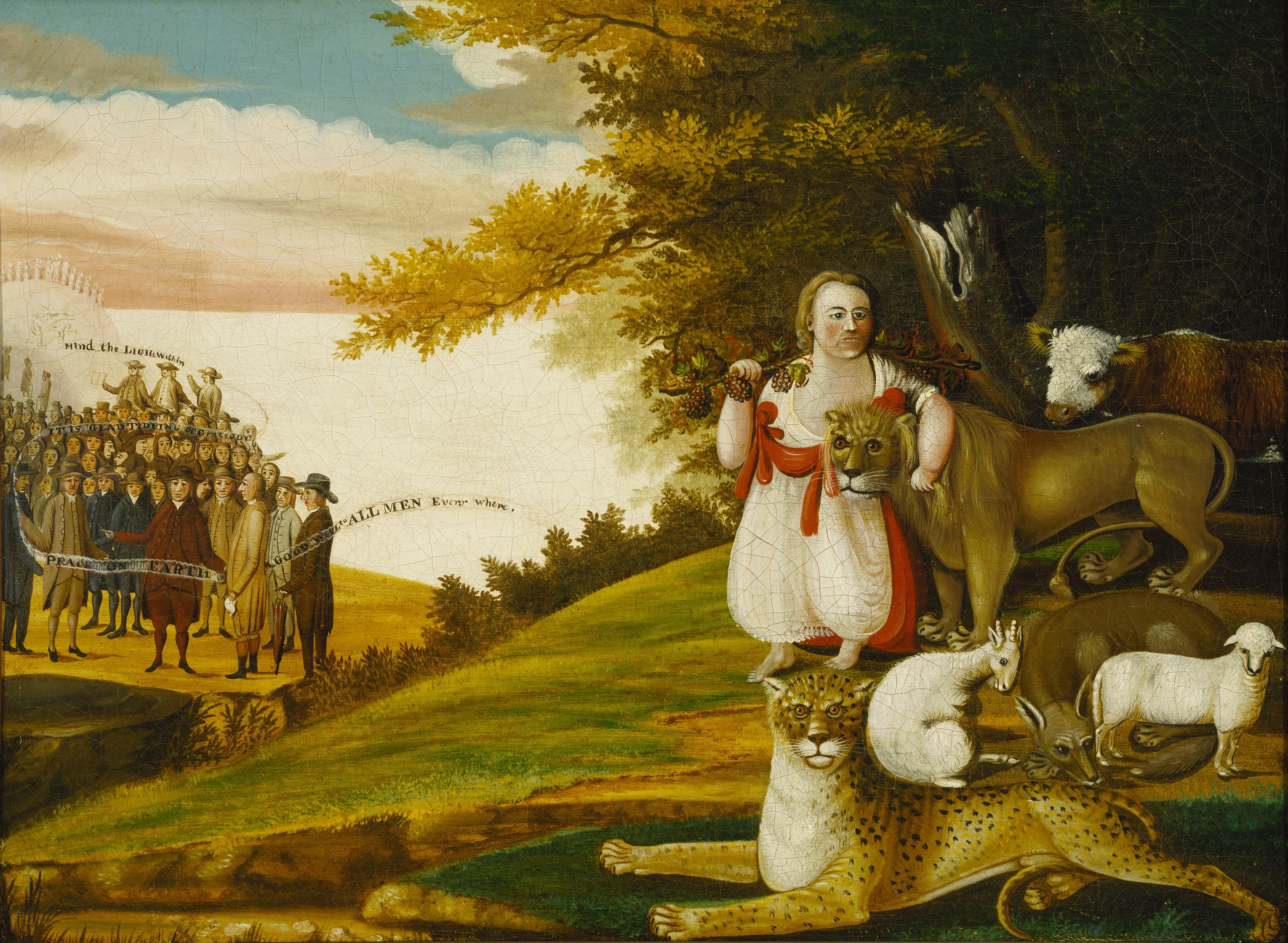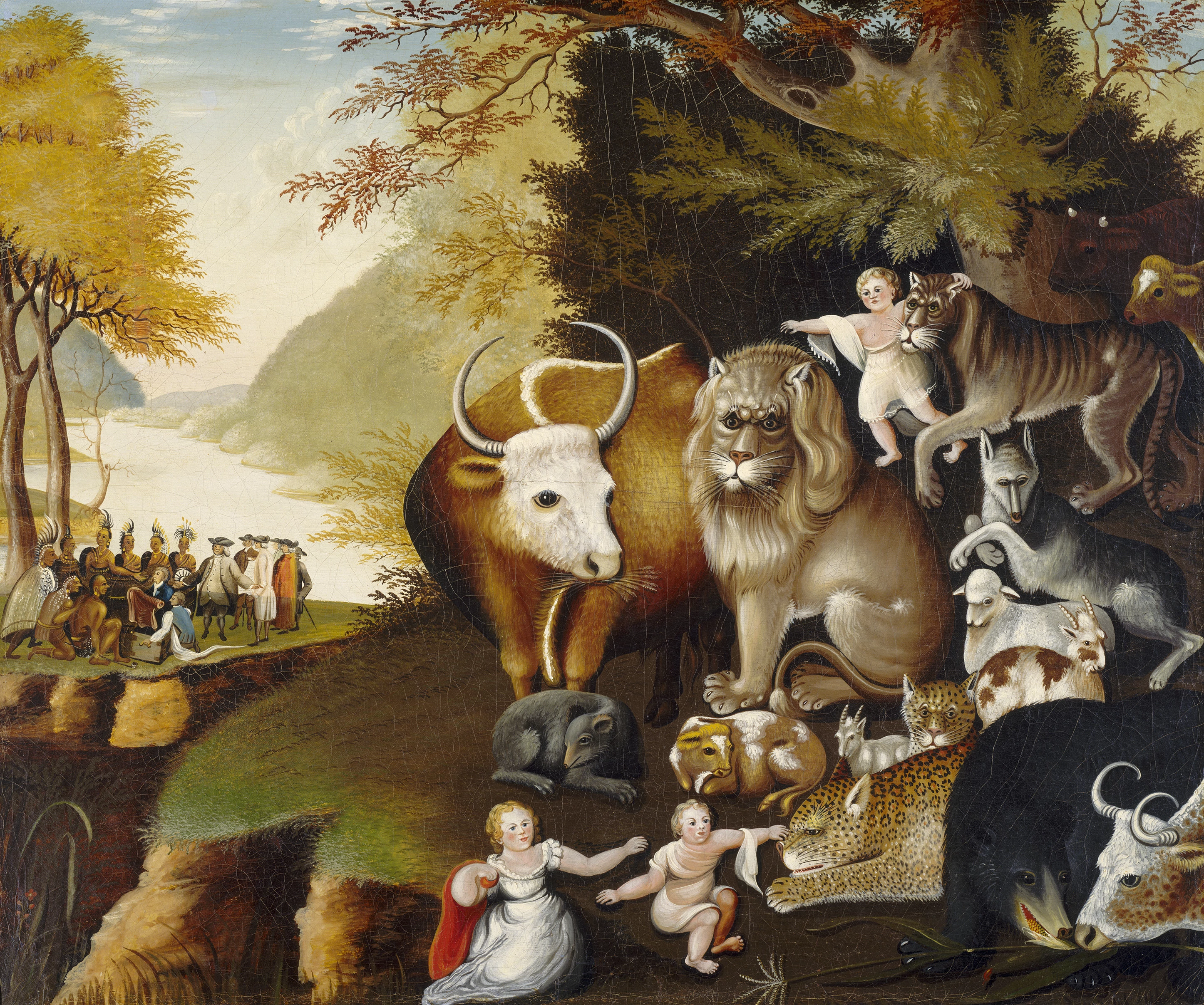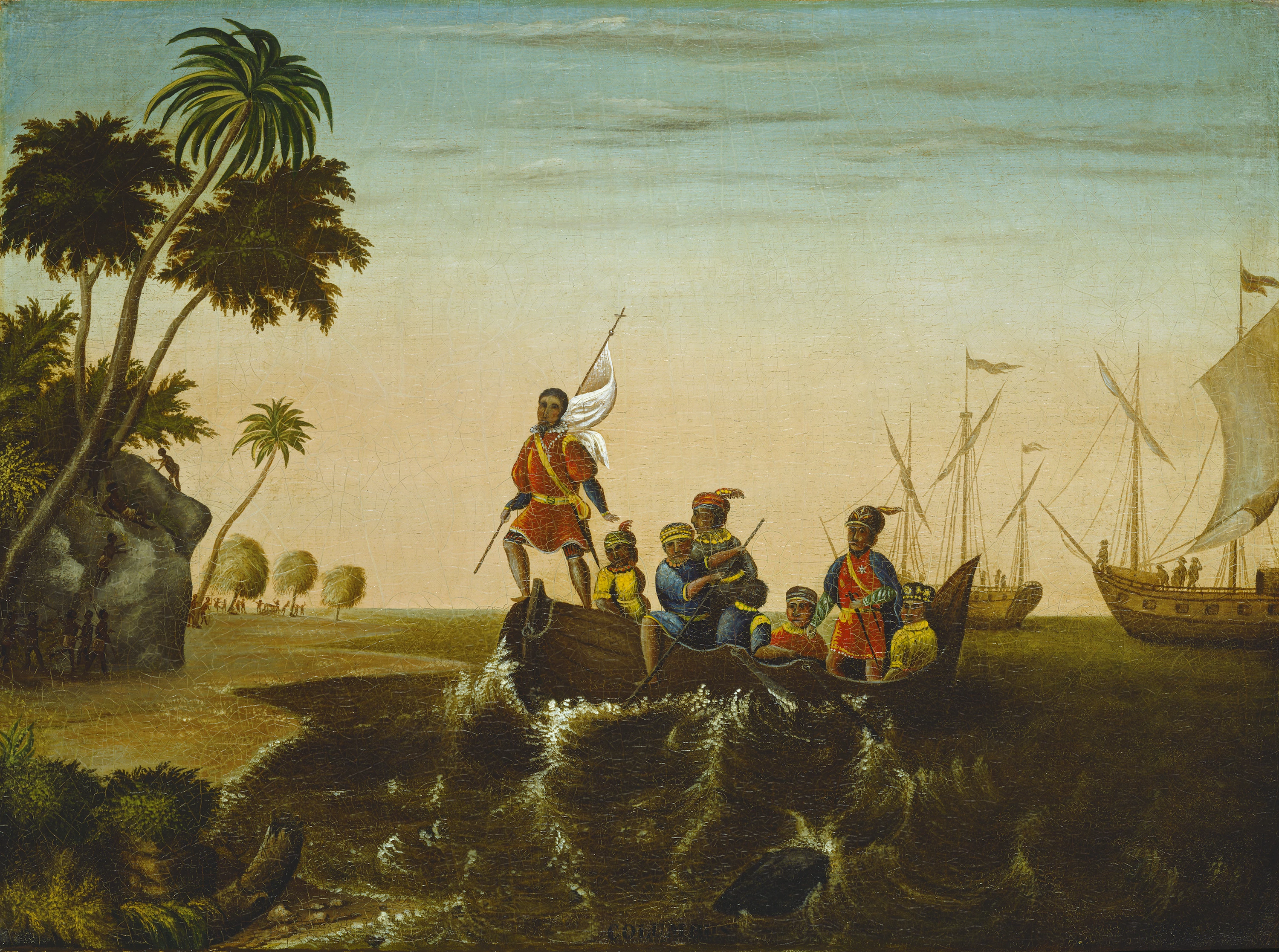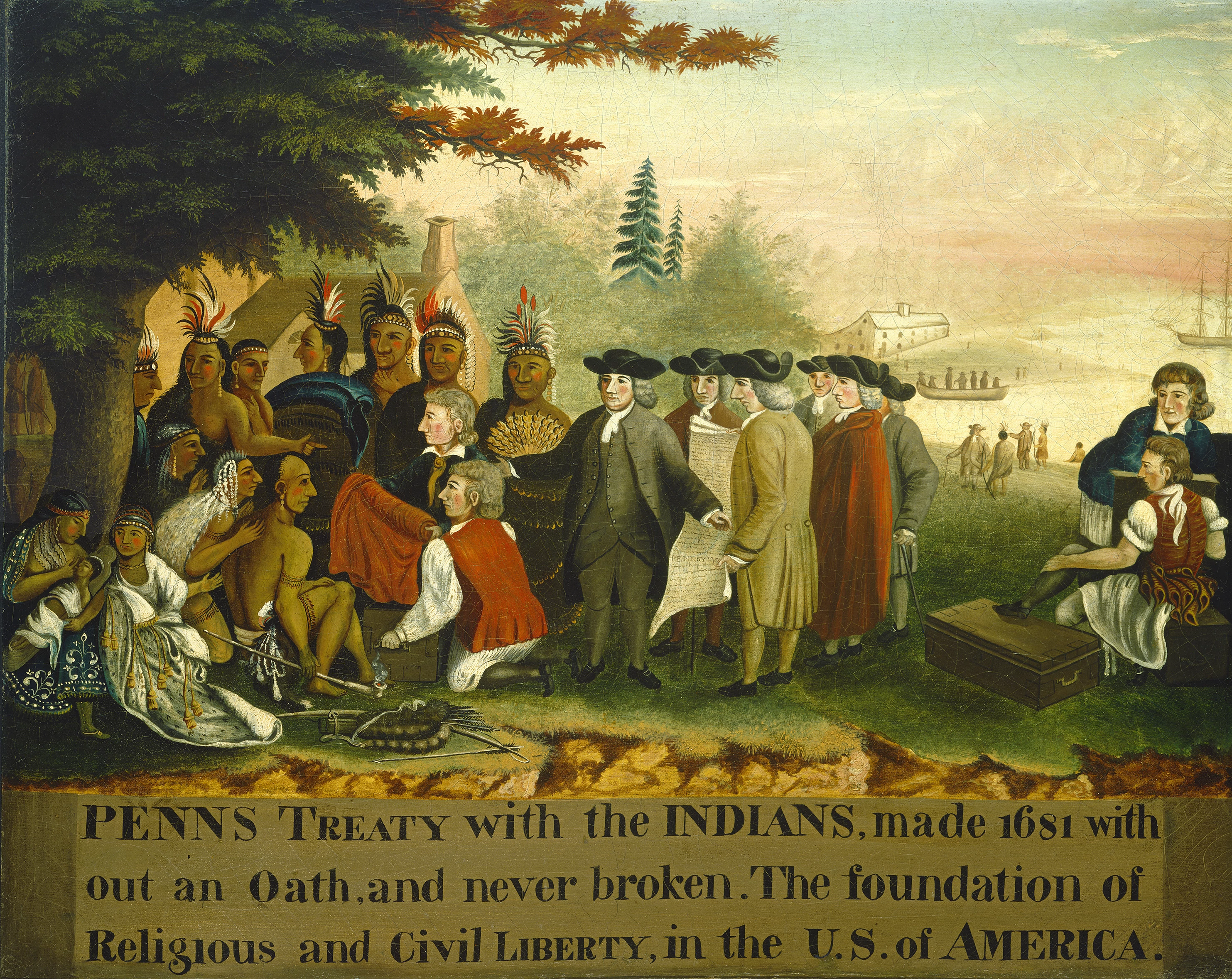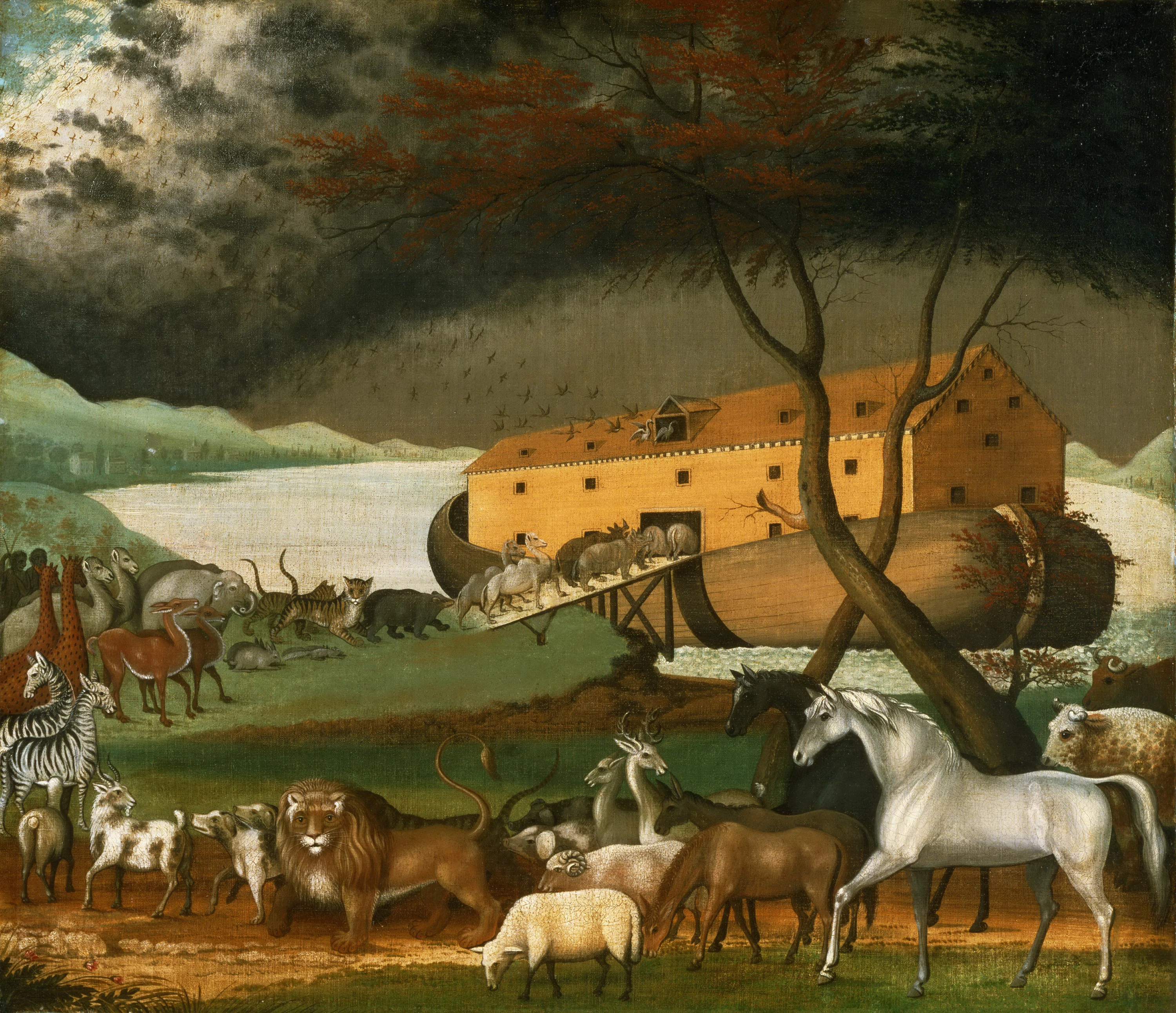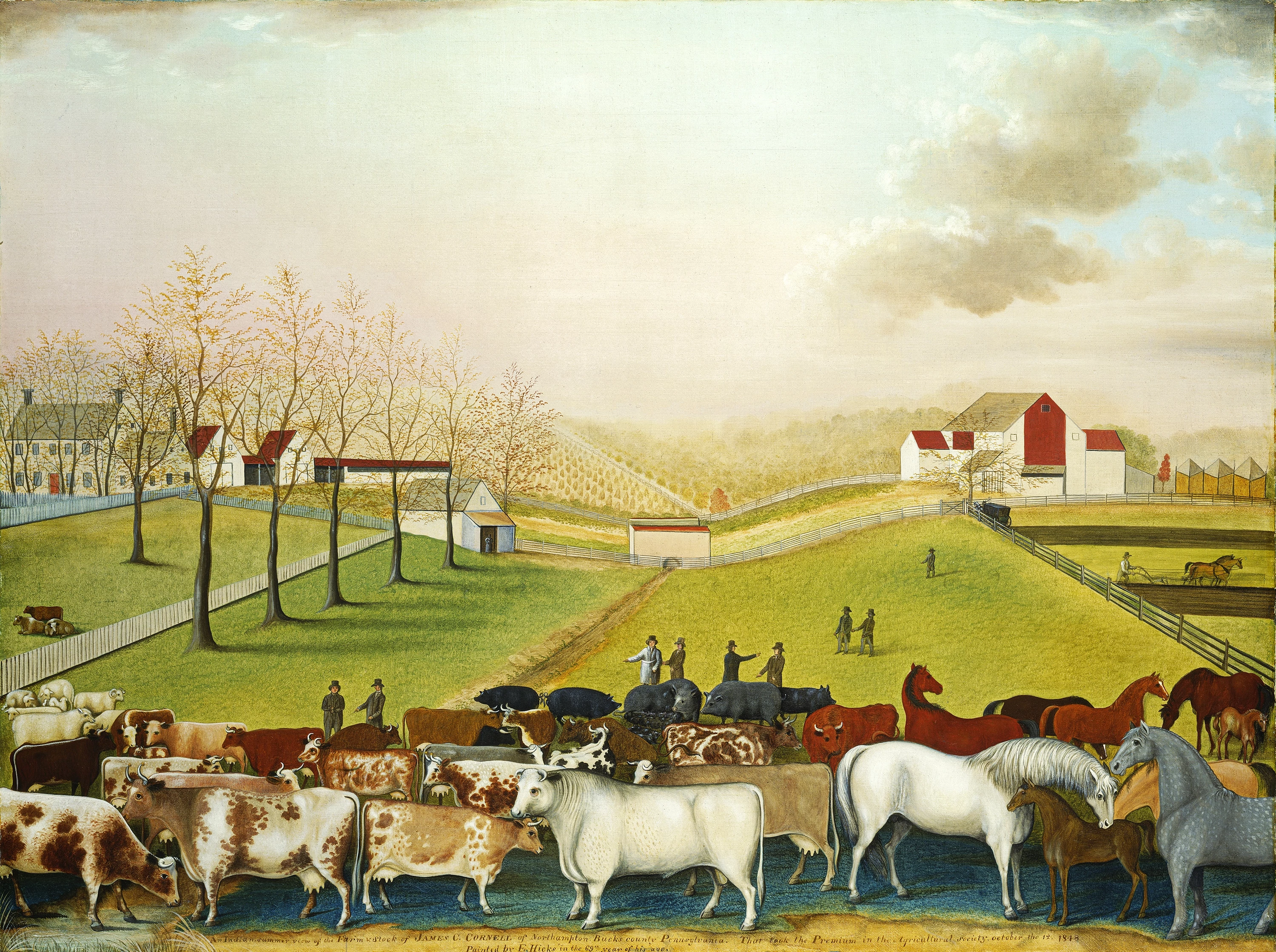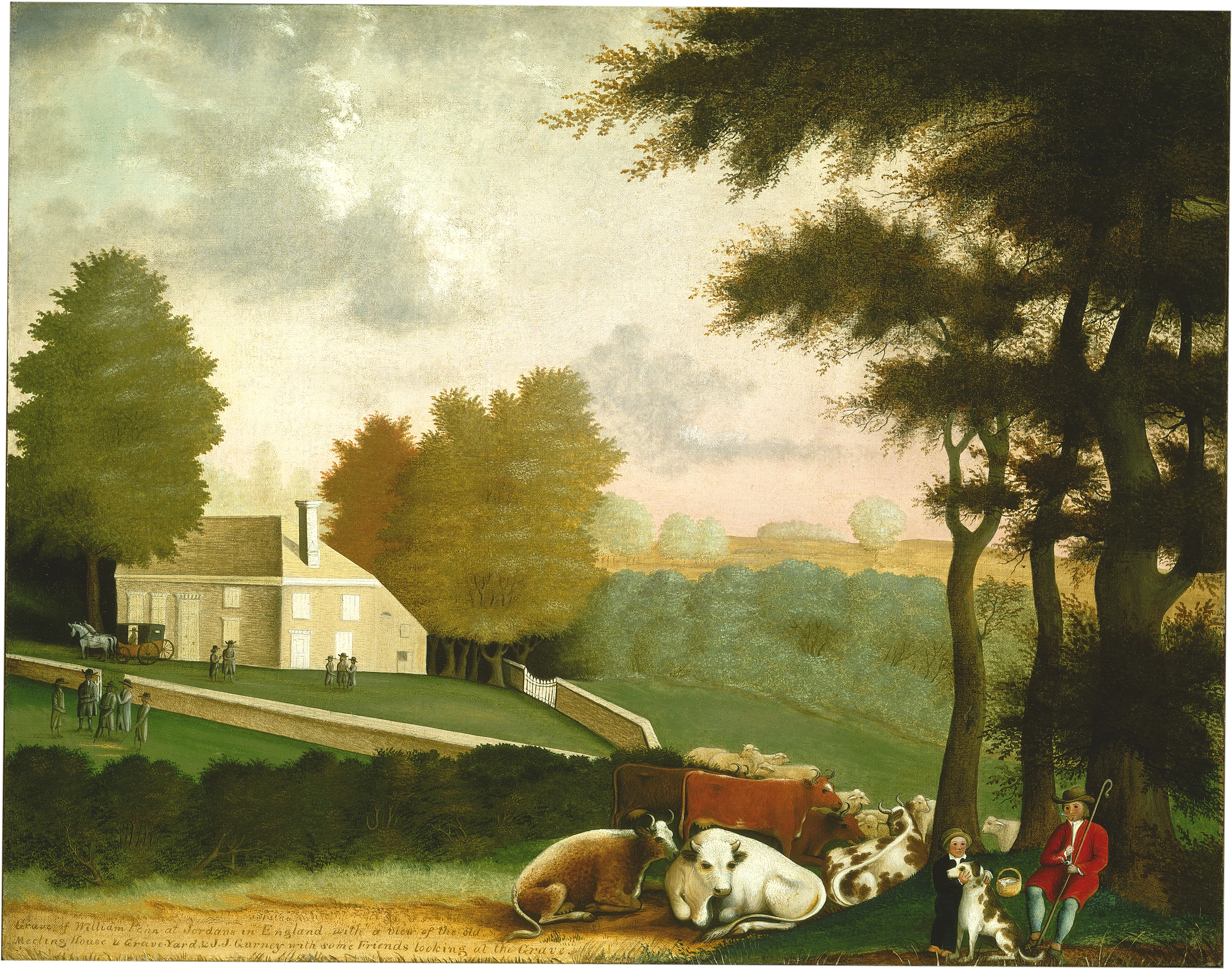Edward Hicks
A pacifist paints lions and leopards
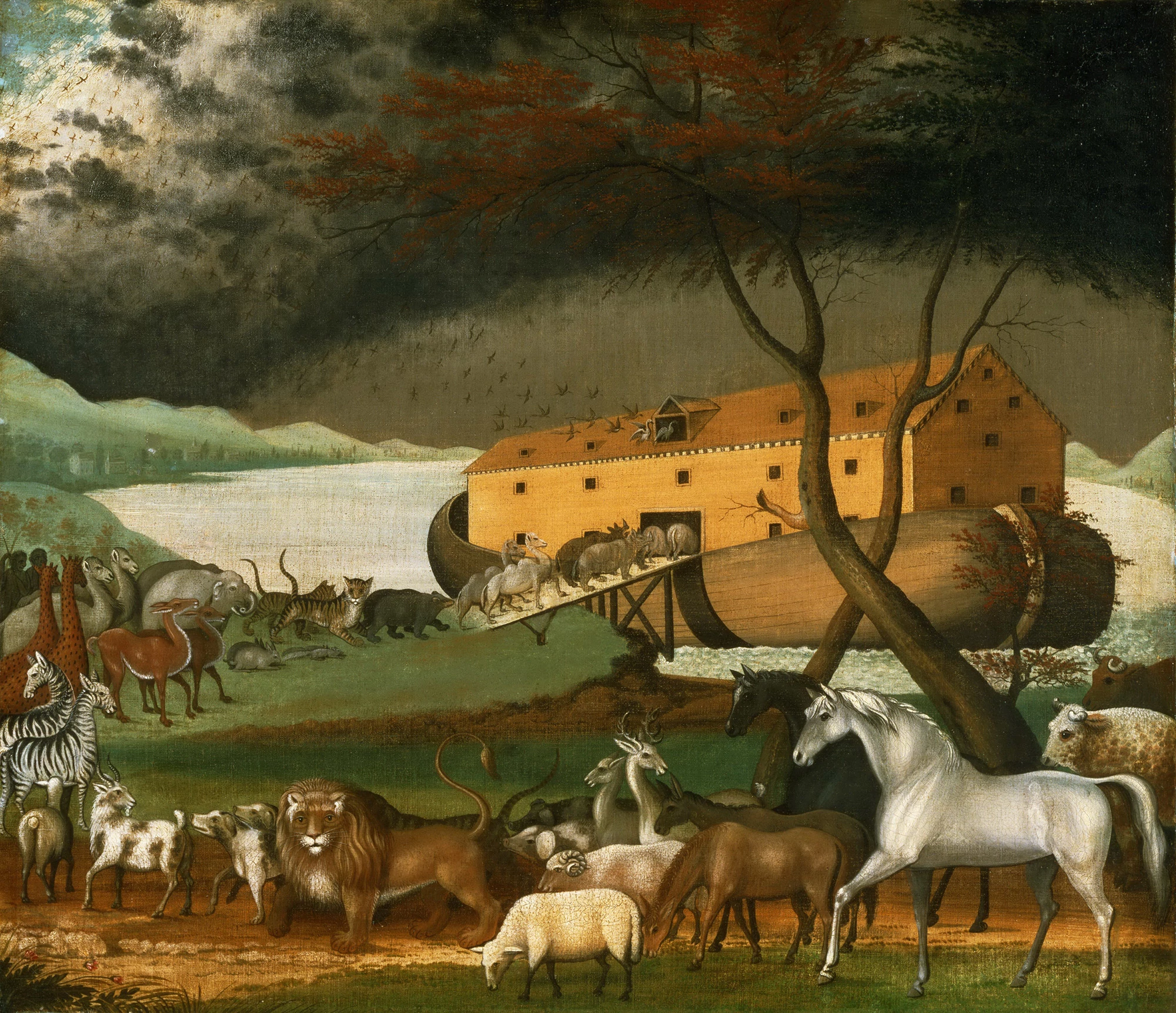
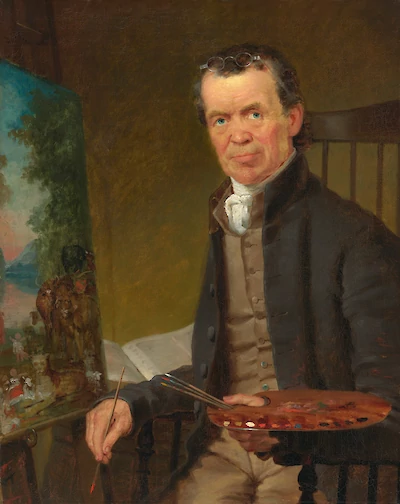


Edward Hicks was a painter, then a preacher, then a painter again.
Edward’s mother raised him as a Quaker, with the belief that all people and animals contained an inner light, a divine power that could redeem the soul and bring peace to earth. Hicks chased that peace his whole life, first as a rebellious youth, then as a traveling preacher, and finally through sixty-two versions of the “Peaceable Kingdom,” Hick’s vision of Isaiah 11:6: The wolf will live with the lamb, the leopard will lie down with the goat, the calf and the lion and the yearling together; and a little child will lead them.
In the 1800s you learned a trade through apprenticeship, and at age 13 Hicks was apprenticed to a coach maker, where he excelled at painting the elaborate ornamental designs popular among the New England upper class. By 20, Hicks was independent, successful, and in his own words “exceedingly fond of singing, dancing, vain amusements, and the company of young people, and too often profanely swearing.”
But Hicks tired of frivolity, and soon traded ‘vain amusements’ for a Quaker wife and five children. Hicks wanted to be a good Quaker. He gave up ornamental painting, adopting instead the utilitarian styles supported by his ascetic doctrines. In 1813, Hicks followed in the footsteps of his older cousin Elias Hicks, becoming an itinerant preacher until he could no longer afford to both support his family and travel.
The 1820s were hard times for the Quakers. Hick’s cousin Elias had introduced a new liberal theology to the Religious Society of Friends, preaching that Jesus was just a man, that sexual passion wasn’t the devil’s fault, and that all slaves should be freed. Radical stuff for the time, and it caused a devastating split in the Quaker community.
In 1820 Edward Hicks found his voice. Amidst the vicious politicking of the approaching Quaker schism, Hicks turned back to painting, creating the first of many images of the “Peaceable Kingdom.” The the of wild animals quietly communing with children became Hick’s message, his sermon. As his skills grew he took commissions for other paintings, but always returned to the Kingdom. His zoo of animals stood for more than peace, they became symbols of laying down the idols of human pride. The lion symbolized power and wealth, the leopard represented lustful worldliness. All in submission to the innocence of a child.
...
Got questions, comments or corrections about Edward Hicks? Join the conversation in our Discord, and if you enjoy content like this, consider becoming a member for exclusive essays, downloadables, and discounts in the Obelisk Store.
